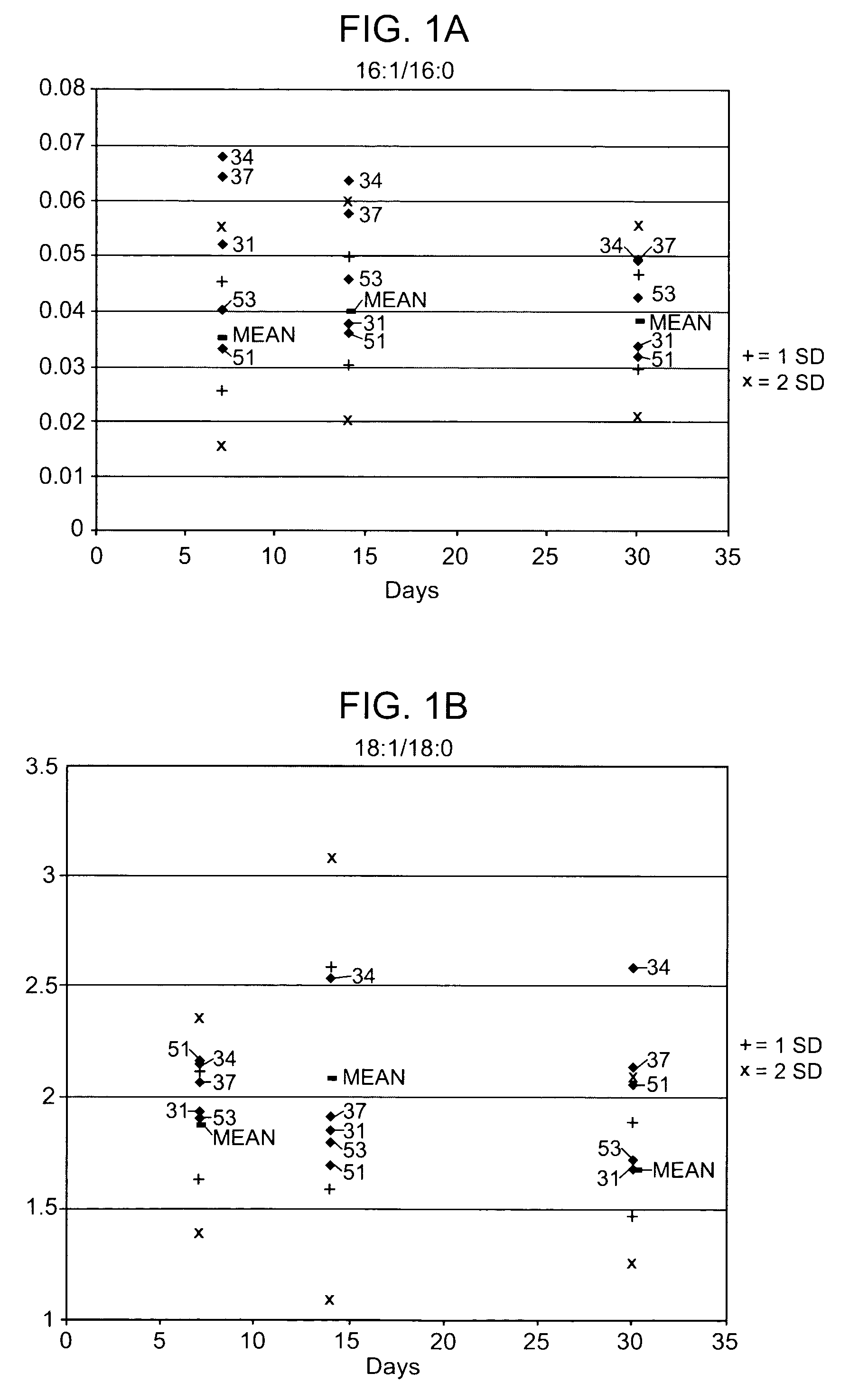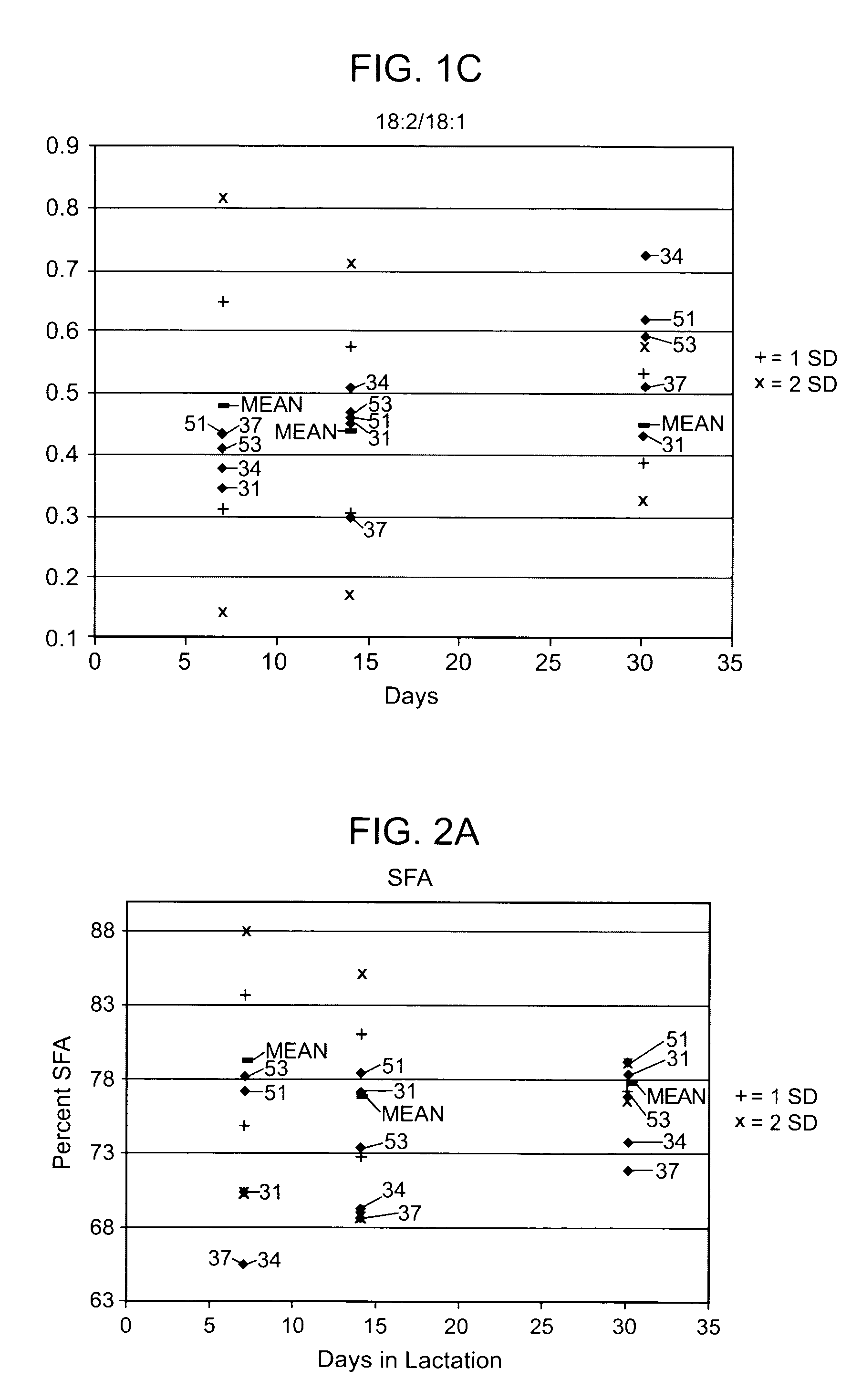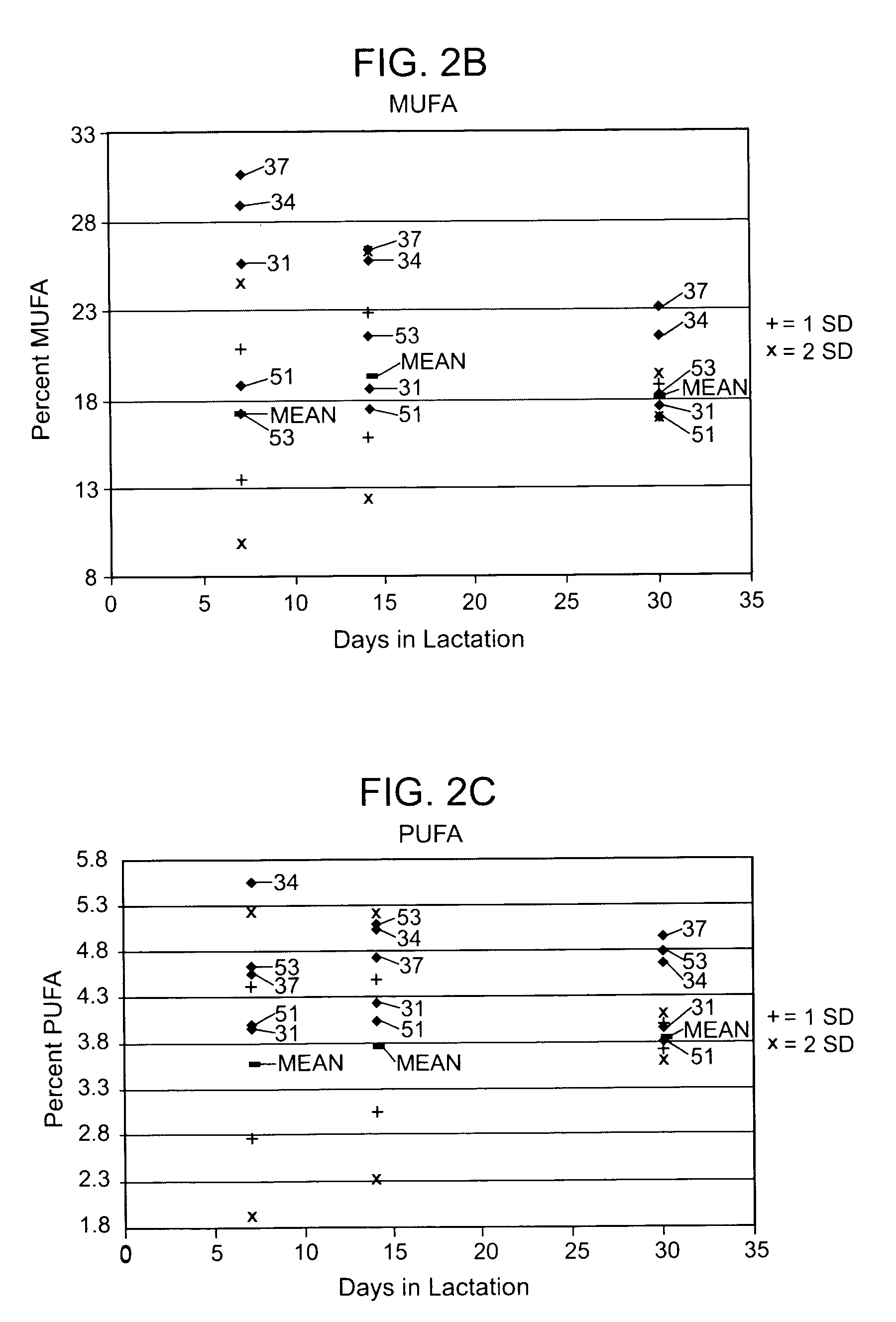Stearoyl CoA desaturase transgenic non-human animals
a technology of stearoyl coa and transgenic animals, which is applied in the field of transgenic non-human animals, can solve the problems of increased blood cholesterol levels and increased risk of atherosclerosis
- Summary
- Abstract
- Description
- Claims
- Application Information
AI Technical Summary
Benefits of technology
Problems solved by technology
Method used
Image
Examples
example 1
Generation and Characterization of Transgenic Mice and Goats
Materials and Methods
Constructs
[0137]A DNA construct designed to express the rat stearoyl CoA desaturase (SCD) cDNA in the mammary gland under control of the milk protein gene beta-lactoglobulin (Blg) promoter was made by standard DNA cloning techniques. The 5526 base pair (bp) bovine Blg-rat SCD construct (pBlgSCD) consisted of 1216 bp of the bovine Blg promoter (from the EagI site at −954) through untranslated exon 1 and the start codon. The start codon was replaced by a XhoI site and was followed by 1831 bp of bovine Blg DNA from +4 to the ClaI site at 4044 and 1349 bp from the untranslated portion of exon 6 through the SphI site at 7639, including 917 bp of 3′ flanking DNA. The 1079 bp rat SCD cDNA containing its own translational start and stop codons was inserted at the XhoI site.
[0138]Both transgenic mice and goats were produced with DNA construct pBlgSCD by standard pronuclear microinjection procedures. Briefly, don...
example 2
Transgenic Animals Expressing a Stearoyl CoA Desaturase Transgene in Intestinal Epithelial Cells
[0148]Two DNA constructs are made, which promote expression of the rat SCD cDNA in the small intestine of the mouse under the control of the rat FABPi gene. A 1.2 kb fragment of the rat FABPi promoter from −1179 to +28 is included in the DNA construct. This region of promoter has been shown to promote tissue-specific expression of the human growth hormone gene at levels similar to the endogenous FABP gene (Sweetser et al. supra). The FABPi promoter region is amplified from mouse genomic DNA using a polymerase chain reaction (PCR) with forward primer 5′GAATTCCTTAATTTGCATAA3′ (SEQ ID NO:01) from −1179 and reverse primer 5′CTCGAGCAGCTGTGTCATAGTTCT3′ (SEQ ID NO:02) from +28. The resulting fragment has an XhoI restriction enzyme site on the 3′ end and is cloned into the pGemTEasy vector (Promega). The same rat SCD cDNA with XhoI ends used in Example 1 is then inserted at the unique XhoI site i...
example 3
Generation of a Transgenic Pig
[0151]The following is a non-limiting example of how to make a transgenic pig. Pig embryos are recovered from the oviduct, and are placed into a 1.5 ml microfuge tube containing approximately 0.5 ml embryo transfer media (Beltsville Embryo Culture Medium). Embryos are centrifuged for 12 minutes at 16,000× g RCF (13,450 RPM) in a microcentrifuge. The embryos are then removed from the microcentrifuge tube with a drawn and polished Pasteur pipette and placed into a 35 mm petri dish for examination. If the cytoplasm is still opaque with lipid such that pronuclei are not visible, the embryos are centrifuged again for 15 minutes. Embryos are then placed into a microdrop of media (approximately 100 μl) in the center of the lid of a 100 mm petri dish, and silicone oil is used to cover the microdrop and fill the lid to prevent media from evaporating. The petri dish lid containing the embryos is set onto an inverted microscope equipped with both a heated stage an...
PUM
| Property | Measurement | Unit |
|---|---|---|
| Fraction | aaaaa | aaaaa |
| Fraction | aaaaa | aaaaa |
| Percent by mass | aaaaa | aaaaa |
Abstract
Description
Claims
Application Information
 Login to View More
Login to View More - R&D
- Intellectual Property
- Life Sciences
- Materials
- Tech Scout
- Unparalleled Data Quality
- Higher Quality Content
- 60% Fewer Hallucinations
Browse by: Latest US Patents, China's latest patents, Technical Efficacy Thesaurus, Application Domain, Technology Topic, Popular Technical Reports.
© 2025 PatSnap. All rights reserved.Legal|Privacy policy|Modern Slavery Act Transparency Statement|Sitemap|About US| Contact US: help@patsnap.com



